Top 5 Most Famous and Beautiful Female Spies In The World Of All Time
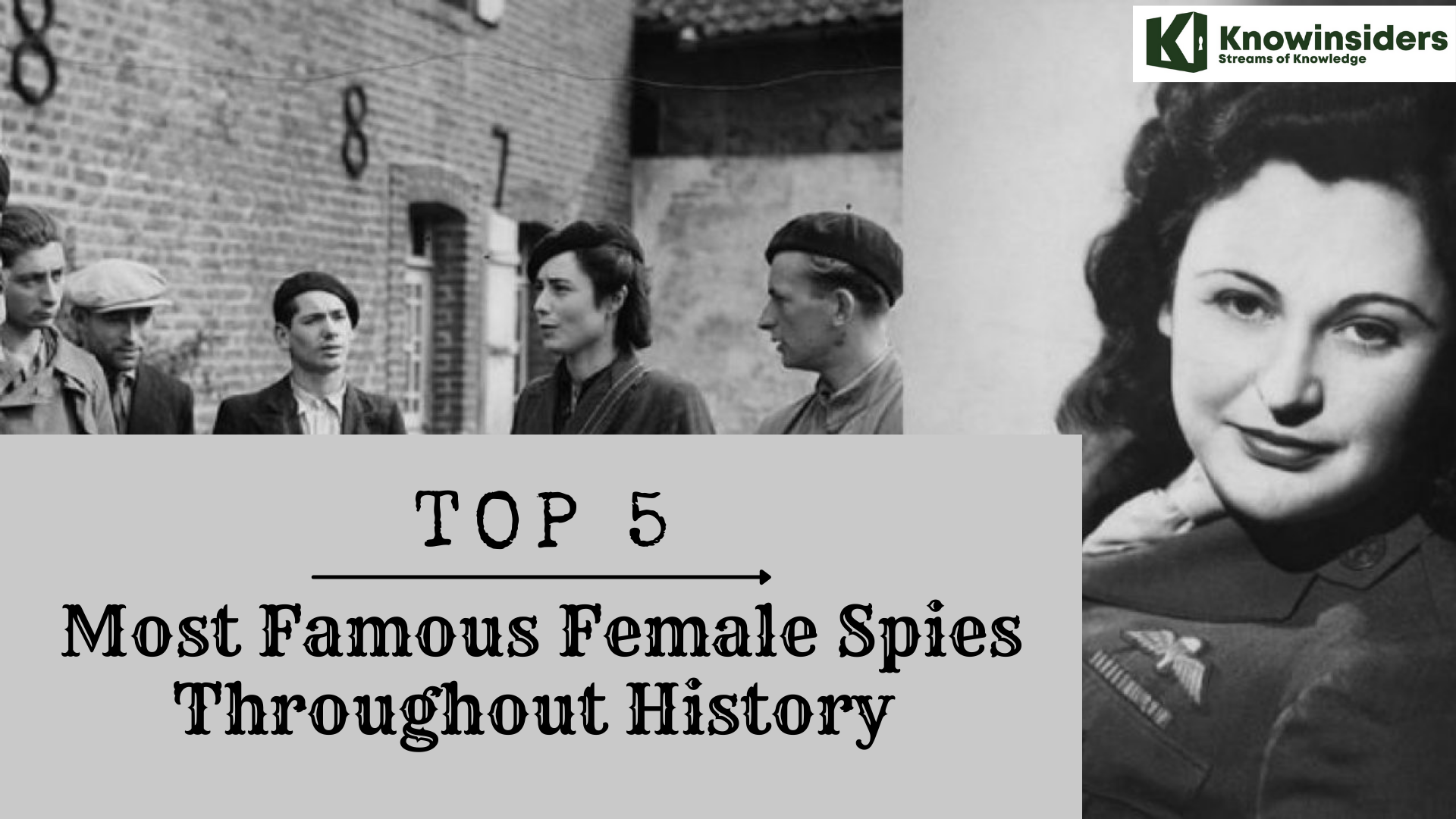 |
| Top 5 Most famous female spies throughout history |
| Table of Content |
Throughout history, espionage has played a huge role in the development and growth of countries all over the world. For years, spies have been gathering intelligence and helping nations by undertaking a number of covert operations.
But too often do we forget that some of these incredible spies were women – giving their courage and strength to fight for their countries – some so heroic they even putt the likes of James Bond to shame. And as a leading manufacturer of covert listening devices, clever little spy cameras and other spy equipment, we find spy operations rather intriguing! Let's take a look at these brave, heroic famous female spies throughout history.
Who are the most famous and beautiful female spies in the world of all time?
5. Vera Atkins
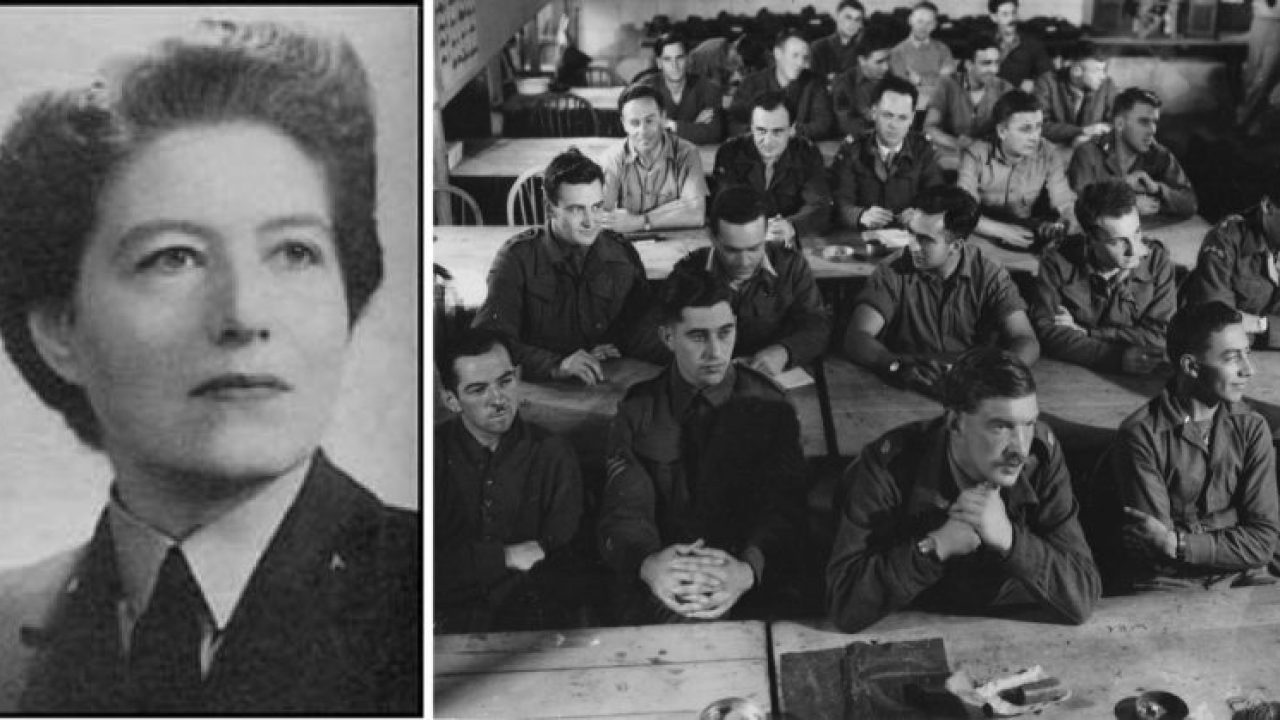 |
| Photo: War History Online |
Vera May Atkins CBE (16 June 1908 – 24 June 2000) was a Romanian-born British intelligence officer who worked in the France Section of the Special Operations Executive (SOE) from 1941 to 1945 during the Second World War.
At the start of the war, Atkins was part of the British team which evacuated Poland's Enigma code breakers with their reverse engineered replica Enigma machines across the border into her native Romania, from there they made their way to France and Britain to teach the Western Allies cryptanalysis of the Enigma.
Atkins was born Vera Maria Rosenberg in Galați, Romania, to Max Rosenberg (d. 1932), a German-Jewish father, and his British-Jewish wife, Zeffro Hilda, known as Hilda (d. 1947). She had four brothers.
Atkins briefly attended the Sorbonne in Paris to study modern languages and a finishing school at Lausanne, where she indulged her passion for skiing, before training at a secretarial college in London. Atkins' father, a wealthy businessman on the Danube Delta, went bankrupt in 1932 and died a year later. Atkins remained with her mother in Romania until emigrating to Britain in 1937, a move made in response to the threatening political situation in Europe.
During her somewhat-gilded youth in Romania, where Atkins lived on the large estate bought by her father at Crasna (now in Ukraine), Atkins enjoyed the cosmopolitan society of Bucharest where she became close to the anti-Nazi German ambassador, Friedrich Werner von der Schulenburg (executed after the July 1944 plot). Later Atkins became involved with a young British pilot, Dick Ketton-Cremer, whom she had met in Egypt, and to whom she may have been briefly engaged. He was killed in action in the Battle of Crete on 23 May 1941. Atkins was never to marry, and lived in a flat with her mother while working for SOE and until 1947 when Hilda died.
While in Romania, Atkins came to know several diplomats who were members of British Intelligence, some of whom were later to support her application for British nationality, and to whom in view of her and her family's strong pro-British views, she may have provided information as a "stringer". Atkins also worked as a translator and representative for an oil company.
The surname "Atkins" was her mother's maiden name and itself an Anglicised version of the original "Etkins", which she adopted as her own. She was a cousin of Rudolf Vrba.
Atkins was demobilised in 1947, and although nominated for an MBE, was not awarded a decoration in the postwar honours lists.
Atkins went to work for UNESCO's Central Bureau for Educational Visits and Exchanges, as office manager from 1948, and director from 1952. She took early retirement in 1961, and retired to Winchelsea in East Sussex.
In 1950, Atkins was an advisor on the film Odette, about Odette Sansom (by the then wife of Peter Churchill), and in 1958 on the film of Carve Her Name With Pride, based upon the biography of the same name of Violette Szabo by R. J. Minney. She also assisted Jean Overton Fuller on her 1952 life of Noor Inayat Khan, Madelaine, but their friendship cooled after the author revealed the success of the German Funkspiel against F Section in her 1954 book, The Starr Affair, and Overton Fuller later came to believe that Atkins had been a Soviet agent.
In 1996, Atkins wrote to The Daily Telegraph to defend the decision to send Noor Inayat Khan to France, writing of Noor's initial success in evading capture, her two escape attempts, and her detention in Pforzheim prison manacled in chains as a dangerous prisoner: "This is the record of Noor Inayat Khan and her answer to those who doubted her.”
4. Yoshiko Kawashima
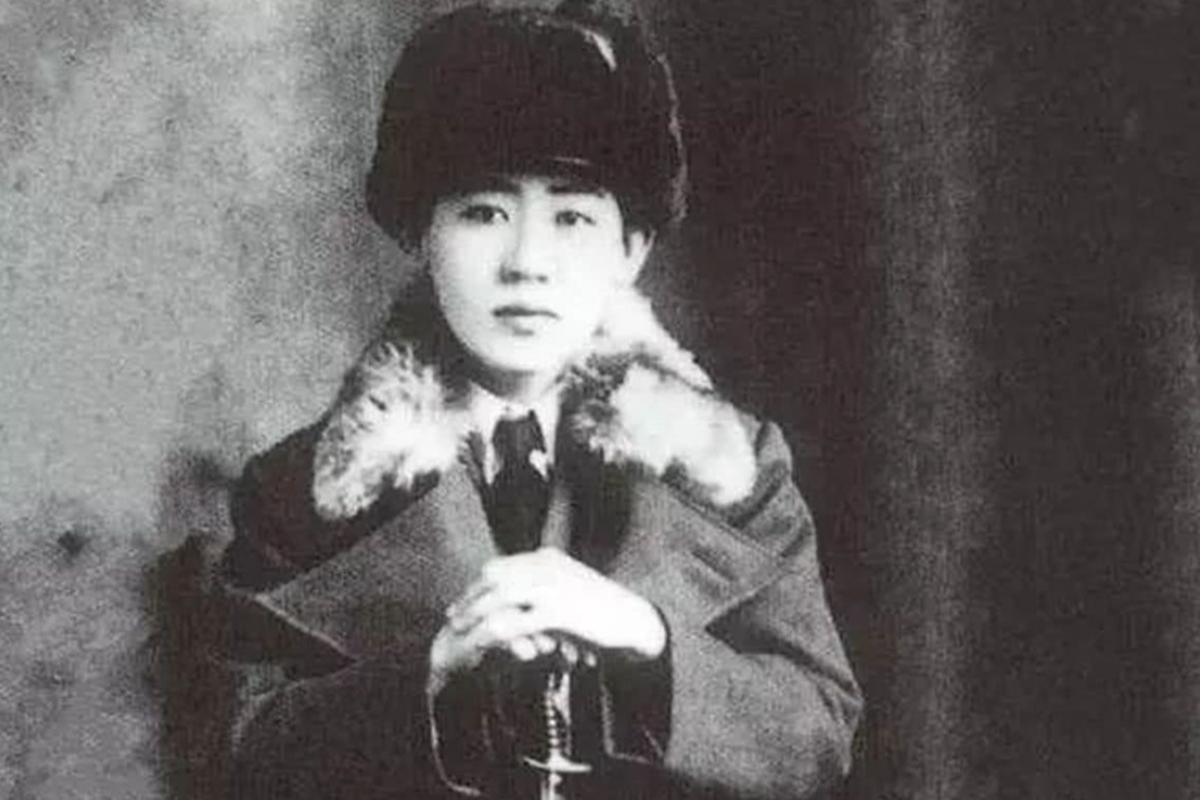 |
| Photo: inf.news |
Yoshiko Kawashima (川島 芳子, Kawashima Yoshiko, 24 May 1907 – 25 March 1948) was a Qing dynasty princess of Manchu descent. She was raised in Japan and served as a spy for the Japanese Kwantung Army and Manchukuo during the Second Sino-Japanese War. She is sometimes known in fiction under the pseudonym "Eastern Mata Hari". After the war, she was captured, tried, and executed as a traitor by the Nationalist government of the Republic of China. She was also a notable descendant of Hooge, eldest son of Hong Taiji.
She was born in the Aisin Gioro clan, the imperial clan of the Manchu-led Qing dynasty. Her birth name was Aisin Gioro Xianyu and her courtesy name was Dongzhen (literally "eastern jewel"). Her Sinicised name was Jin Bihui. She is best known by her Japanese name, Kawashima Yoshiko (川島 芳子), which is read as Chuāndǎo Fāngzǐ in Chinese. In 1925, Yoshiko took the male name Ryōsuke.
In November 1927 at age 20, her brother and adoptive father arranged for her marriage to Ganjuurjab in Port Arthur (also known as Ryojun), who was the son of Inner Mongolian Army general Babojab, who once led the Mongolian-Manchurian Independence Movement there in 1911. The marriage ended in divorce after only three years and she left Mongolia, and she first traveled to teeming coastal towns of China and lived a bohemian lifestyle for some years in Tokyo with a series of rich lovers, both men and women. Kawashima moved to the foreign concession in Shanghai. While in Shanghai, she met Japanese military attaché and intelligence officer Ryukichi Tanaka, who utilised her contacts with the Manchu and Mongol nobility to expand his network. She was living with Tanaka in Shanghai at the time of the Shanghai Incident of 1932.
After Tanaka was recalled to Japan, Kawashima continued to serve as a spy for the general Kenji Doihara. She undertook undercover missions in Manchuria, often in disguise, and was considered "strikingly attractive, with a dominating personality, almost a film-drama figure, half tom-boy and half heroine, and with a passion for dressing up as a male. She possibly did this in order to impress the men, or she may have done it in order to more easily fit into the tightly-knit guerrilla groups without attracting too much attention".
Kawashima became a well-known and popular figure in Manchukuo, making appearances on radio broadcasts and even issuing a record of her songs. Numerous fictional and semi-fictional stories of her exploits were published in newspapers and also as pulp fiction. However, her very popularity created issues with the Kwantung Army because her utility as an intelligence asset was long gone, and her value as a propaganda symbol was compromised by her increasingly critical tone against the Japanese military's exploitative policies in Manchukuo as a base of operations against China in the Second Sino-Japanese War, and she gradually faded from public sight.
After the end of the war, on 11 November 1945, a news agency reported that "a long sought-for beauty in male costume was arrested in Beijing by counter-intelligence officers." She was held at Hebei Model Prison.
Charged with treason as a hanjian on 20 October 1947, she was executed by a bullet shot into the back of her head on 25 March 1948, and her body was later put on public display.
Her body was collected by a Japanese monk to be cremated. Her remains were sent back to her adoptive family and later buried at Shōrinji temple in Matsumoto, Nagano Prefecture, Japan.
 Top 10 Most Mysterious People In The World Top 10 Most Mysterious People In The World There are things on earth that we have never found out, as for the list of the 10 most mysterious people in the world right ... |
3. Virginia Hall
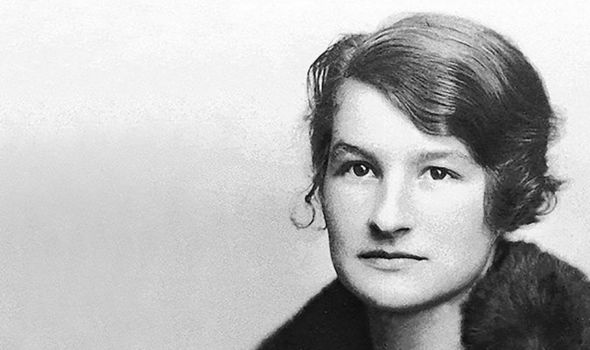 |
| US spy Virginia Hall was a key figure in the second World War (Image: NC) |
Virginia Hall Goillot DSC, Croix de Guerre, MBE (April 6, 1906 – July 8, 1982), code named Marie and Diane, was an American who worked with the United Kingdom's clandestine Special Operations Executive (SOE) and the American Office of Strategic Services (OSS) in France during World War II. The objective of SOE and OSS was to conduct espionage, sabotage and reconnaissance in occupied Europe against the Axis powers, especially Nazi Germany. SOE and OSS agents in France allied themselves with resistance groups and supplied them with weapons and equipment parachuted in from England. After World War II Hall worked for the Special Activities Division of the Central Intelligence Agency (CIA).
Hall was a pioneering agent for the SOE, arriving in Vichy France on 23 August 1941, the first female agent to take up residence in France. She created the Heckler network in Lyon. Over the next 15 months, she "became an expert at support operations – organizing resistance movements; supplying agents with money, weapons, and supplies; helping downed airmen to escape; offering safe houses and medical assistance to wounded agents and pilots." She fled France in November 1942 to avoid capture by the Germans.
She returned to France as a wireless operator for the OSS in March 1944 as a member of the Saint network. Working in territory still occupied by the German army and mostly without the assistance of other OSS agents, she supplied arms, training, and direction to French resistance groups, called maquis, especially in Haute-Loire where the maquis cleared the department of German soldiers prior to the arrival of the American army in September 1944.
The Germans gave her the nickname Artemis, and the Gestapo reportedly considered her "the most dangerous of all Allied spies." Having lost part of her leg in a hunting accident, Hall used a prosthesis she named "Cuthbert." She was also known as "the limping lady" by the Germans and as "Marie of Lyon" by many of the SOE agents she assisted.
2. Nancy Wake
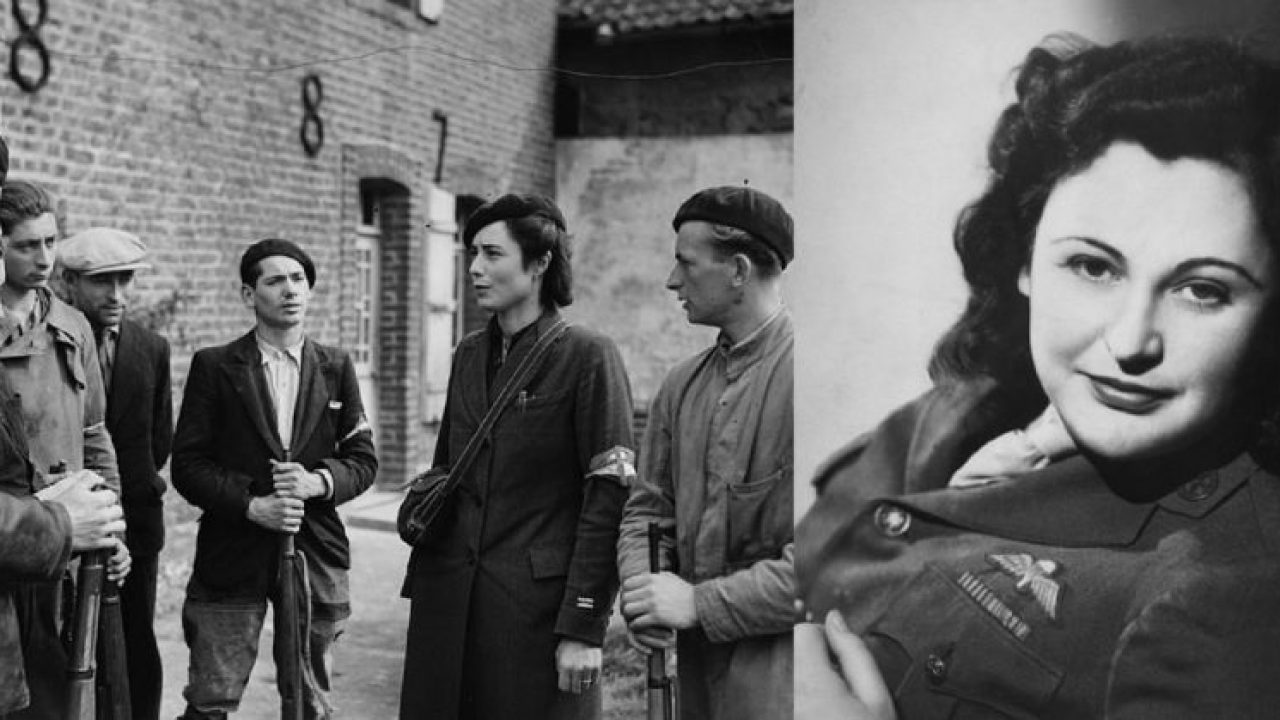 |
| Photo: War History Online |
Nancy Grace Augusta Wake, AC, GM (30 August 1912 – 7 August 2011) (also known as Nancy Fiocca) was a nurse and journalist who joined the French Resistance and later the Special Operations Executive (SOE) during World War II, and briefly pursued a post-war career as an intelligence officer in the Air Ministry. The official historian of the SOE, M. R. D. Foot, said that "her irrepressible, infectious, high spirits were a joy to everyone who worked with her"
Born in the suburb of Roseneath in Wellington, she moved first to Sydney in Australia as a child, and then to Paris in the 1930s. Wake was living in Marseille with her French industrialist husband, Henri Fiocca, when the war broke out. After the fall of France to Nazi Germany in 1940, Wake became a courier for the Pat O'Leary escape network led by Ian Garrow and, later, Albert Guérisse. As a member of the escape network, she helped Allied airmen evade capture by the Germans and escape to neutral Spain. In 1943, when the Germans became aware of her, she escaped to Spain and continued on to the United Kingdom. Her husband was captured and executed.
After reaching Britain, Wake joined the Special Operations Executive (SOE) under the code name "Hélène". On 29–30 April 1944 as a member of a three-person SOE team code-named "Freelance", Wake parachuted into the Allier department of occupied France to liaise between the SOE and several Maquis groups in the Auvergne region, which were loosely overseen by Émile Coulaudon (code name "Gaspard"). She participated in a battle between the Maquis and a large German force in June 1944. In the aftermath of the battle, a defeat for the maquis, she claimed to have bicycled 500 kilometers to send a situation report to SOE in London.
Wake was a recipient of the George Medal from the United Kingdom (17 July 1945), the Medal of Freedom from the United States (1947), the Légion d'honneur from France (Knight - 1970 and Officer - 1988), a Companion of the Order of Australia from Australia (22 February 2004), and the Badge in Gold from New Zealand (2006). In 1985, she published her autobiography, The White Mouse, the title derived from what she said the Germans called her.
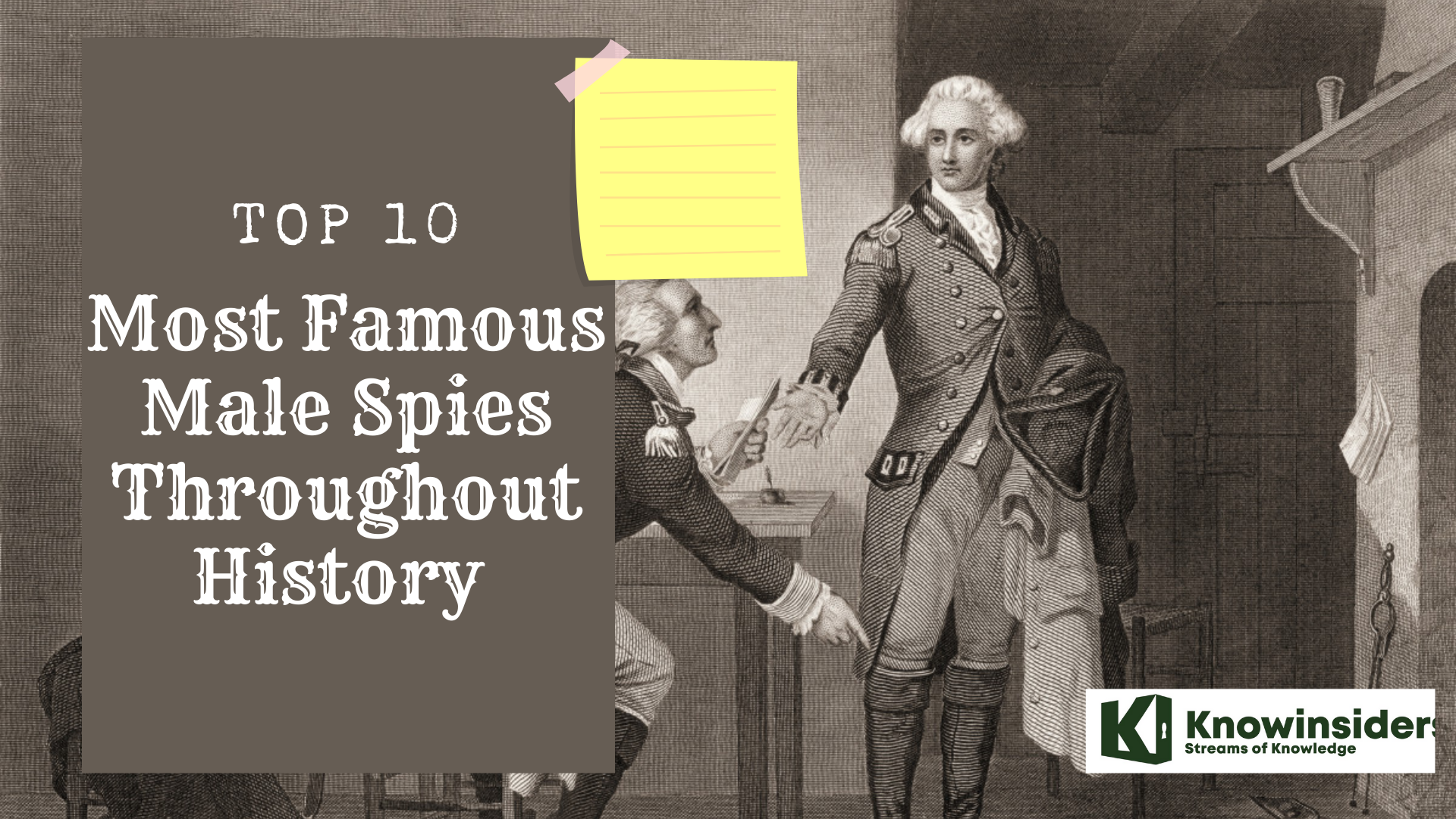 Top 10 Most Famous and Handsome Male Spies In The World Of All Time Top 10 Most Famous and Handsome Male Spies In The World Of All Time Keep reading to know more about top 10 most famous and handsome male spies throughout world history in the article below. |
1. Mata Hari
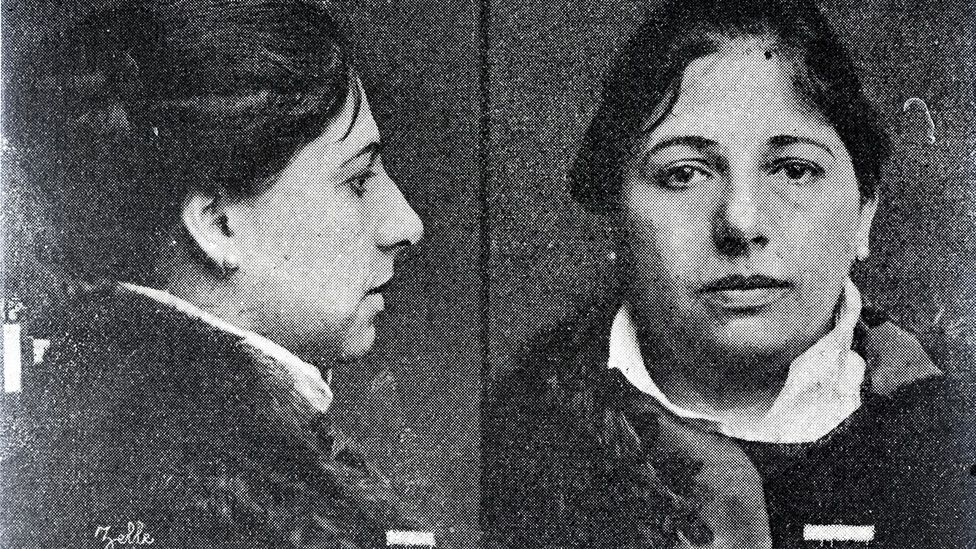 |
| Police photo of Mata Hari from the day of her arrest MUSEUM OF FRIESLAND COLLECTION, LEEUWARDEN |
Margaretha Geertruida MacLeod (née Zelle; 7 August 1876 – 15 October 1917), better known by the stage name Mata Hari (/ˈmɑːtə ˈhɑːri/), was a Dutch exotic dancer and courtesan who was convicted of being a spy for Germany during World War I. Many people still believe she was innocent because the French Army needed a scapegoat. She was executed by firing squad in France.
Margaretha Geertruida Zelle was born 7 August 1876 in Leeuwarden, Netherlands. She was the eldest of four children to Adam Zelle (1840–1910) and his first wife Antje van der Meulen (1842–1891). She had three younger brothers; Johannes Hendriks, Arie Anne, and Cornelis Coenraad. She was affectionately called "M'greet" by her family. Despite traditional assertions that Mata Hari was partly of Jewish, Malaysian, or Javanese, i.e. Indonesian, descent, scholars conclude she had no Jewish or Asian ancestry and both of her parents were Dutch. Her father owned a hat shop, made investments in the oil industry, and became affluent enough to give Margaretha and her siblings a lavish early childhood that included exclusive schools until the age of 13.
In 1903, Zelle moved to Paris, where she performed as a circus horse rider using the name Lady MacLeod, much to the disapproval of the Dutch MacLeods. Struggling to earn a living, she also posed as an artist's model.
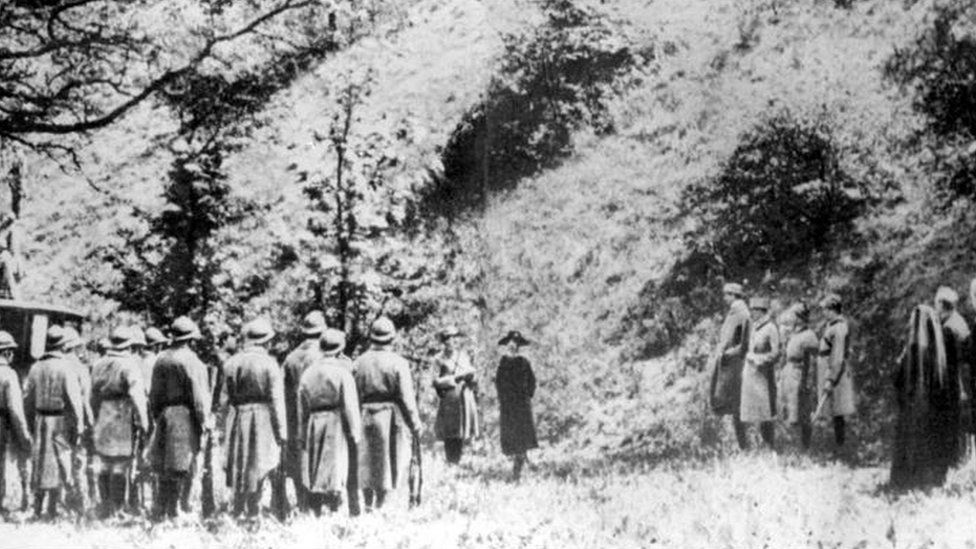 |
| Mata Hari facing the firing squad. There is doubt over this picture and it may be a still from a contemporaneous film. Photo: PA |
By 1904, Mata Hari began to rise to prominence as an exotic dancer. She was a contemporary of dancers Isadora Duncan and Ruth St. Denis, leaders in the early modern dance movement, which around the turn of the 20th century looked to Asia and Egypt for artistic inspiration. Critics would later write about this and other such movements within the context of Orientalism. Gabriel Astruc became her personal booking agent.
In December 1916, the Second Bureau of the French War Ministry let Mata Hari obtain the names of six Belgian agents. Five were suspected of submitting fake material and working for the Germans, while the sixth was suspected of being a double agent for Germany and France. Two weeks after Mata Hari had left Paris for a trip to Madrid, the double agent was executed by the Germans, while the five others continued their operations. This development served as proof to the Second Bureau that the names of the six spies had been communicated by Mata Hari to the Germans.
On 13 February 1917, Mata Hari was arrested in her room at the Hotel Elysée Palace on the Champs Elysées in Paris. She was put on trial on 24 July, accused of spying for Germany, and consequently causing the deaths of at least 50,000 soldiers. Although the French and British intelligence suspected her of spying for Germany, neither could produce definite evidence against her.
In July 1917, a new government under Georges Clemenceau had come into power, utterly committed to winning the war. In this context, having one German spy on whom everything that went wrong with the war so far could be blamed was most convenient for the French government, making Mata Hari the perfect scapegoat, which explains why the case against her received maximum publicity in the French press, and led to her importance in the war being greatly exaggerated. The Canadian historian Wesley Wark stated in a 2014 interview that Mata Hari was never an important spy and just made a scapegoat for French military failures which she had nothing to do with, stating: "They needed a scapegoat and she was a notable target for scapegoating."
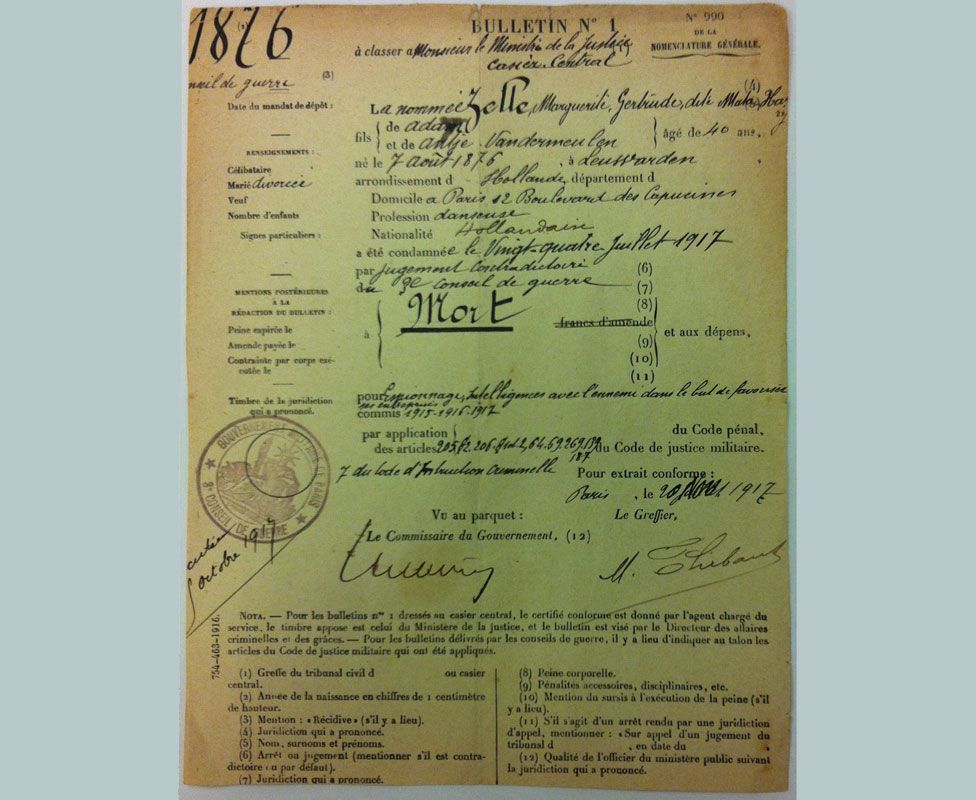 |
| The French court's notification of Mata Hari's death sentence MUSEUM OF FRIESLAND COLLECTION, LEEUWARDEN |
Although news reports following her execution claimed she had admitted spying for Germany, Mata Hari made no such admission. She maintained throughout her ordeal that she had never been a German spy. At her trial, Zelle vehemently insisted that her sympathies were with the Allies and declared her passionate love of France, her adopted homeland. In October 2001, documents released from the archives of MI5 (British counter-intelligence) were used by a Dutch group, the Mata Hari Foundation, to ask the French government to exonerate Zelle as they argued that the MI5 files proved she was not guilty of the charges she was convicted of. A spokesman from the Mata Hari Foundation argued that at most Zelle was a low-level spy who provided no secrets to either side, stating: "We believe that there are sufficient doubts concerning the dossier of information that was used to convict her to warrant re-opening the case. Maybe she wasn't entirely innocent, but it seems clear she wasn't the master-spy whose information sent thousands of soldiers to their deaths, as has been claimed."
Zelle was executed by a firing squad of 12 French soldiers just before dawn on 15 October 1917. She was 41. According to an eyewitness account by British reporter Henry Wales, she was not bound and refused a blindfold. She defiantly blew a kiss to the firing squad.
A 1934 New Yorker article reported that at her execution she wore "a neat Amazonian tailored suit, especially made for the occasion, and a pair of new white gloves", though another account indicates she wore the same suit, low-cut blouse, and tricorn hat ensemble which had been picked out by her accusers for her to wear at trial, and which was still the only full, clean outfit which she had in prison. Neither description matches photographic evidence. Wales recorded her death, saying that after the volley of shots rang out, "Slowly, inertly, she settled to her knees, her head up always, and without the slightest change of expression on her face. For the fraction of a second it seemed she tottered there, on her knees, gazing directly at those who had taken her life. Then she fell backward, bending at the waist, with her legs doubled up beneath her." A non-commissioned officer then walked up to her body, pulled out his revolver, and shot her in the head to make sure she was dead.
| Some reports say she refused to be blindfolded. As one hand was being tied to the post, with the other she made a brief wave to her lawyer. The commander lowered his sword in a swift motion, there was the sound of rifle fire, and Mata Hari crumpled to her knees. An officer approached with a revolver and shot her once through the head. After the execution, no-one came to claim Mata Hari's body. So it was delivered to the school of medicine in Paris where it was used for lessons in dissection. Her head was preserved at the Museum of Anatomy. But during an inventory some 20 years ago, it was found to have disappeared. |
 Top 5 Most Creative Zodiac Signs According To Astrology Top 5 Most Creative Zodiac Signs According To Astrology Every zodiac sign is capable of being a creative thinker, but some are much more naturally inclined to do so than others. Let's find out ... |
 Top 5 Hottest Scenes In Hollywood Movies That Almost Deleted Top 5 Hottest Scenes In Hollywood Movies That Almost Deleted Check out our list of top 5 hottest scenes in Hollywood movies that were almost deleted! |
 Top 5 Hottest Scenes In Bollywood Movies That Almost Deleted Top 5 Hottest Scenes In Bollywood Movies That Almost Deleted Check out hottest scenes that were almost deleted on Bollywood movies! |
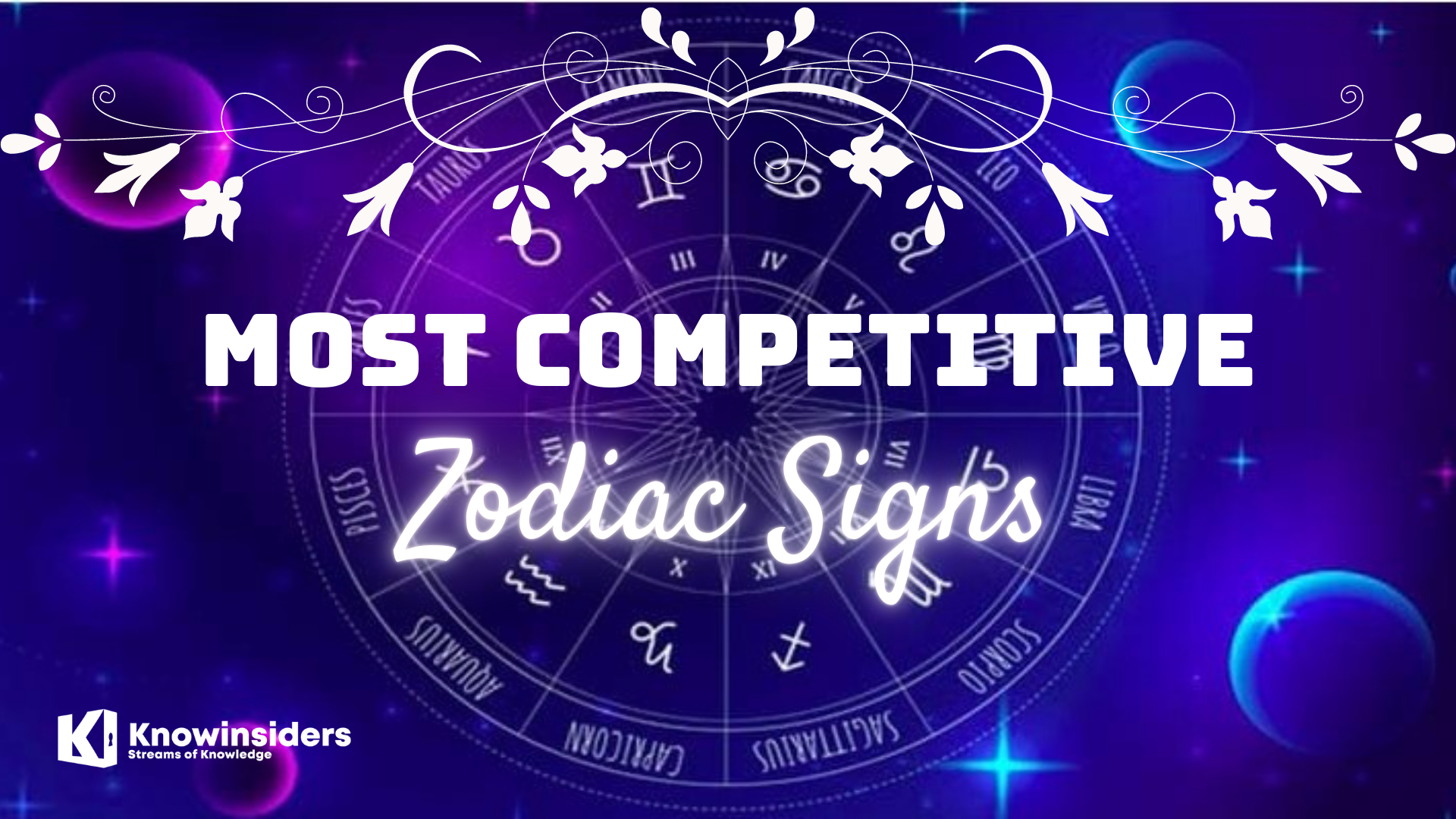 Top 5 Most Competitive Zodiac Signs According To Astrology Top 5 Most Competitive Zodiac Signs According To Astrology For some people, being competitive is just something they’re good at. Let's find out more information on this interesing trait with our top 5. |


























